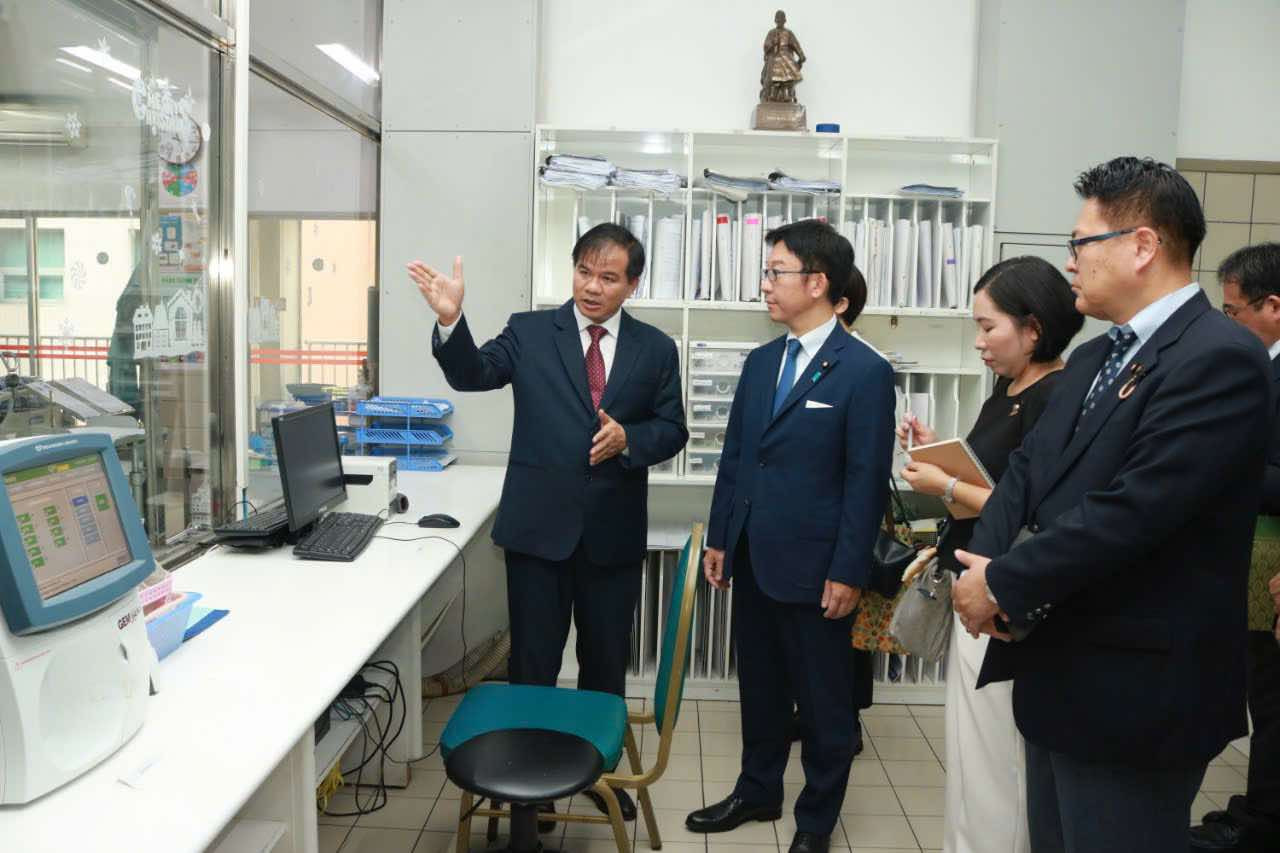
On August 26, a delegation of Japanese parliamentarians examined projects under the Japanese government’s development aid at Bach Mai Hospital to assess their effectiveness and propose support to upgrade A9, the emergency center at the hospital.
Associate Prof Dao Xuan Co, director of Bach Mai Hospital, said the hospital has received great support from the Japanese government, especially for upgrading the hospital in 1998-2000, increasing the hospital’s capability in 2000-2005, strengthening training in 2006-2009, and improving the quality of the workforce of the medical treatment system in 2010-2015.
At the meeting, the leaders of Bach Mai Hospital expressed their hope that the government of Japan would support the building of a multi-purpose emergency center.
Under the plan designed by Bach Mai Hospital, the multi-purpose emergency center would be a 9-storey building, the largest in Southeast Asia, that would offer one-stop-shop emergency services within the shortest possible time.
The center would be able to receive 600-800 patients a day, serving as the backbone of the medical system in the northern region. It would connect 35 provincial hospitals, 200 district hospitals, private healthcare networks, specialized medical units, the Hanoi 115 Emergency Service, and other outpatient emergency units.
According to Co, the multi-purpose emergency center would undertake the role of a high-level technical unit and take part in emergency medicine development, professional cooperation, and scientific research in Vietnam and overseas.
According to Associate Prof Nguyen Anh Tuan, director of A9, the A9 center receives 300-350 patients from 35 cities and provinces in the north and in Hanoi.
The A9 Center has a network of 5,000 emergency doctors in the north, and north central region, which coordinates services through a social network community. The provinces with severe cases receive consultancy before patients are transferred to higher-level hospitals. The current model classifies patients at local hospitals, which helps ease the overload at the center.
Bach Mai Hospital is the largest medical facility in the north with 3,600 beds. Every year, the hospital treats an average of 200,000 inpatients and 2 million outpatients. In addition to giving medical care to the seriously ill, the doctors at the hospital carry out training and give instructions via remote support to emergency and resuscitation units in other cities and provinces.
On August 1, Bach Mai Hospital began giving medical examinations to patients during later hours from 5 pm to 9 pm.
Phuong Thuy